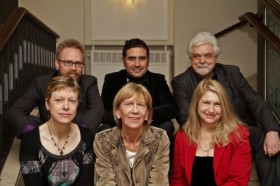Challenging xenophobia, homophobia, social and economic inequalities
Any one returning to a film festival after 13 years is likely to see some changes - but there was a sea change since I last attended the Berlinale in 1999. In February 1999, Potsdamer Platz was a massive construction site, brightly coloured cranes on the horizon along with some partially built concrete and glass towers. The millennium opening of the new festival location was eagerly anticipated at the Zoo Palast in February 1999. Since then, the Berlinale has been staged at the new site at Potsdamer Platz for over a decade. Not to be missed, however, are some grand old "dames" - cinemas in other parts of Berlin where festival screenings also take place - the International Cinema on Allée Karl Marx, and the gorgeous art deco Friedrichstadt Palast.
The Panorama and Forum films, and also some Official Competition films, reveal the vision behind the Berlinale: that film may be a radical democratic space challenging xenophobia, homophobia, social and economic inequalities. By offering a venue for screening experimental films, the Berlinale helps ensure that such films will continue to be made. At the same time, it would be naïve to say that those responsible for organizing the Berlinale year after year are indifferent to film as today's goose with golden eggs. In the Tiergarten near the festival site, you will find contradictions as lively as those on the screens and in the film industry - monuments to Goethe, Bismarck, Soviet soldiers, Mozart, Haydn, Beethoven, and grey columns with gilded cupids and guns.
Ecumenical Jury Prize films – Official Competition
The Ecumenical Jury awarded its prize in Official Competition to Cesare deve morire (Caesar Must Die) directed by Vittorio and Paolo Taviani (Italy), the film that also received the Golden Bear from the festival's International Jury. At the final press conference, the directors' comments reflected the gracious sensibility of the film. The film was a new venture for them, and it surprised them. It was filmed in the Roman maximum security prison Rebibbia, predominantly in black and white, with only one image in colour. A wallpaper panorama of the ocean and some islands gradually turns to colour. The film attends to analogous transformations in its filming of prisoners auditioning, rehearsing and performing an adapted Shakespearean tragedy of "Julius Caesar".
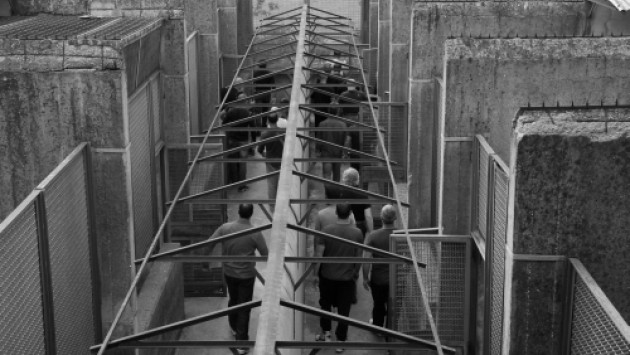
Some of these men will never be released from prison because of the crimes they have committed, their sentence, "life means life." The actors have lived with betrayal, many have murdered, which brings the play close to them. One of the directors described walking through the prison, seeing the doors of the cells open, healthy men lying on their cots staring at the ceiling. Yet the play, and translating it into the dialect of their regions, animates them out of a habit of inertia. Five men sit together working on a translation of the script. Some of the men became more reflective: "Since I've gotten to know art, the cell has become a prison." One of the directors interpreted this remark with fitting ambiguity - that through art, the knowledge of what the world can be expands for this prisoner, and makes him stronger, but it also makes him suffer more. The rehearsal of the play in the bare interiors of the prison conveys that bittersweet transformation: the prisoners are more alive and awake in every respect. Routine prison life seems designed to do the opposite. The directors commented on the need to address problems in prison across Italy as well as the rest of Europe. The prisoners are human beings even if they have done dreadful things. The film reveals this more expansive understanding of humanness through the medium of art, the play within the film.
The Ecumenical Jury also awarded a commendation to another Official Competition film, Rebelle (War Witch) directed by Kim Nguyen (Canada). A young girl, Komona, is taken by rebels from her village after her family is murdered, and trained as a child soldier, prized by her captors as a war witch because of her apparent invincibility in battle. This film is only the second fiction film to be shot in the Congo in twenty years. The film depicts the subjective reality of the indoctrinization of child soldiers, through the childrens' naïve and politically uninformed perspective. They inhabit what the director calls "a half-transparent veil that allows them to accept the violence."
The rebels instruct the children, "the gun is your father and mother - never let go of it." This film depicts not only the chaos of war but also benevolence and grace in life - the ancestors who continue to interact with Komona beyond their deaths, routine village life, a curious settlement of albino people, Komona's friendship and gradual admission of love for another child soldier, an albino boy she calls Magician. She won't marry him unless he follows her father's adage "never marry unless you receive a white rooster" (the white rooster is rare and requires persistence to find). Rachel Mwanza won a Silver Bear for best actress for her performance as Komona in this film.
Two awards for films in the Panorama section: The Wall and The Parade
Die Wand (The Wall), a film directed by Julian Roman Pölsler (Austria/Germany) won the Ecumenical prize in the Panorama section. The only character in the film, played by Marina Gedeck in a superb solo performance, writes a report about her strange circumstances, a report written out of a kind of necessity rather than pleasure, until her paper runs out. In voice-over narration, she describes how she decided not to accompany to town the friends she was visiting in an Alpine cabin, and discovers, the next morning when they do not return, that she is trapped behind a transparent wall that encloses the cabin and part of the surrounding fields and woods, leaving her in solitude with nature and creatures. Initially able to live from the well stocked larder in the cabin, as time passes she is required to garden and hunt for her food.
This change of lifestyle brings about a more significant transformation, from her chaotic consciousness focussed only on "I" to a sense of "we", even if the "we" in her surroundings includes only non-human life - a dog, a cow, a cat, birds, and the deer she hunts. The release from chaos emerges in practices based on her understanding that love is the most rational way to have hope for a better life. She reflects that humans must contend with being the only creatures whose killing of other creatures for survival involves them in moral considerations. Her most companionable animal friend, the dog, dies in a disturbing scene, which intensifies her moral reflection. She maintains her hopefulness through her sense that she must care for the vulnerable, at this particular moment, an albino crow. The cinematography comprises both lush scenes of natural beauty and evocative images of Gedeck's face in chiaroscuro, in the middle of the frame and off to the side, barely visible. The contrasts in cinematic style and narrative - of everyday and strange - evoke the elusiveness of this parable film.
Parada (The Parade), directed by Srdjan Dragojevic (Serbia/Croatia/Macedonia/Slovenia), received a commendation from the Ecumenical Jury. This energetic, campy film begins with the distinct terms that Serbians and other ex-Yugoslavians use to insult each other, a list that ends with "pedar" a common term that all these disparate groups use to denigrate gays. The beginning establishes the film as a comedy with serious intent. The story brings together unlikely allies, macho former ethnic foes and gay activists, with the macho men enlisted to act as body guards during a gay pride parade in Belgrade threatened by extreme violence from nationalists, football hooligans and neo-Nazis.
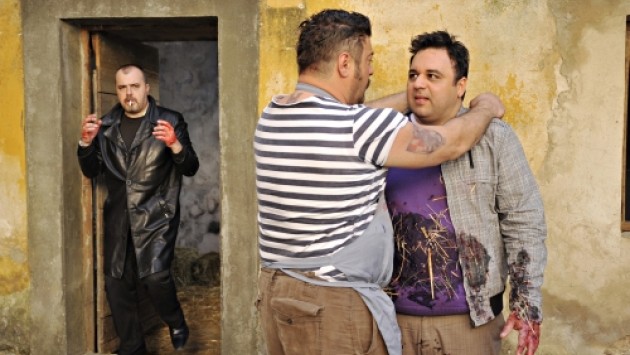
The comedy plays on the homoerotics of any gender extreme, whether macho or "girly girl". The director initially wrote the film as a drama, but found this didn't work -the details at the end of the film suggest that the reality of extreme homophobic violence in Belgrade overwhelms dramatic fiction and needs tragicomedy. As the film notes before the credits inform the audience, in 2010 a "successful" gay pride parade was held in Belgrade - 207 people were injured, the city centre was demolished as anti-gay groups attempted to break through the 3 cordons of police protecting the gay pride parade. In receiving the Commendation, Dragojevic commented on the importance of receiving recognition for his film from a religious jury, since he considers the Archbishop of Belgrade's homophobic remarks as contributing to violence against gays. "I'm going to fax this award to him tomorrow," Dragojevic said.
...and in the Forum section for The Delay
La Demora (The Delay), directed by Rogrido Plá (Uruguay/Mexico/France) won the Ecumenical Prize in the Forum section. The film combines a close minimalist style with long shots of streetscapes, beautifully evoked with a motif of blurred surroundings and ovals of lights. The cinematography depicts the narrowing focus of a single mother who does factory piece work at home while caring for her father who suffers from dementia and is incontinent. In her desperate attempts to get care for him, she discovers that only his homelessness would warrant admission to a senior's home. So she abandons him, having told him to wait for her outside a store. The strain of elder care is ambiguously drawn in this film, with tender scenes between the old man and his grandchildren, and with his daughter. It is a spare, artful film that treats an issue that will become ever more pressing the world over.
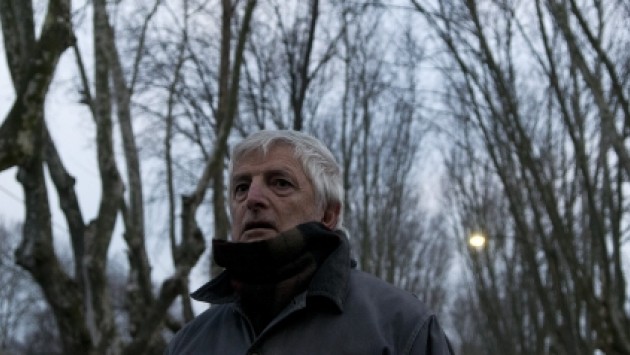
Brief film notes: The afterlife of trauma
Quite a number of films in Official Competition treated the afterlife of traumatic events. The film Gnade (Mercy) is, according to the director Matthias Glasner, about "the fragility of the human spirit to forgive." The decision to film the narrative in Norway's northwest coast on the Arctic Ocean during the polar night underlines the precariousness of this human act, following a hit and run accident.
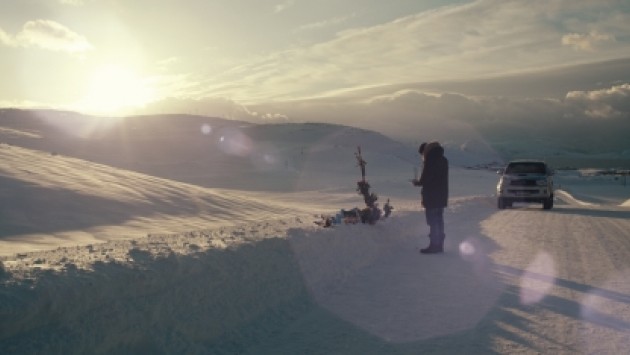
The minimalist film style, with its many references to decay and death, of Csak A Szél (Just the Wind), directed by Hungarian director Bence Fliegauf, follows one Roma family in Hungary just after the murder of another Roma family in the community. In Fliegauf's view, the end of the communist system has led to an increase of xenophobia, resulting in the increasing economic marginalization of the Roma people.
A Panorama film, Call me Kuchu, by Malika Zouhali-Worrall and Katherine Fairfax Wright, explores the contradictions facing gay activists in Uganda: the judiciary has recognized gay rights in a number of recent judgments, and, at the same time, efforts continue to have a draconian anti-homosexuality bill passed in parliament. The film follows the life and violent death of the David Katos, one of Uganda's first openly gay activists, and considers the rampant Christian homophobia in the country, along with the sole religious supporter of the gay community, Bishop Christopher Senyonjo.
Love again and again
Love stories continue to be a popular staple of film. In conclusion, I highlight four films in which a love narrative takes an interesting form. Barbara by Christian Petzold (Germany) shows us the erotics of kindness in a film set in the former East Germany. En Kongelig Affaere (A Royal Affair) by Nikolaj Arcel (Denmark/Czech Republic/Germany/Sweden) is a historical-political drama about the efforts of Johann Friedrich Struensee, while physician to the King of Denmark and during his affair with the Queen, to reform Danish society in keeping with Enlightenment values. The aristocracy fights to regain their privileges, and both political changes and love affair unravel with intense pathos.
The last two films I'll sketch are weird love stories. The audacious Metéora by Spiros Stathoulopoulos (Germany/Greece) shows animated scenes of the pair of lovers, a monk and a nun, and also the saving flood of Jesus' blood from the crucifixion. These are mixed with documentary-like scenes of monastic life, love trysts, farm scenes, and a wrenching scene of a goat being separated from the herd, with terrible cries, to be slaughtered. I'm not sure what the slaughter scene is doing in the film: it may be intended to draw attention to the sacrificial atonement theology of the film (or it evokes a terror at the heart of love?). Postcards from the Zoo by Edwin (Indonesia/Germany/HongKong) is a poetic film in which an odd zoo experience in Jakarta is the setting of a sparely traced attraction between a young woman who grows up at the zoo and a magician in a cowboy costume. Homeless people live in the zoo, along with the animals. Giant synthetic animals also populate the zoo - a bus with the head of a monkey, giant birds revolving on tracks or floating in waterways as children's rides - provoking reflection on human's varied and strange relations with animals.

